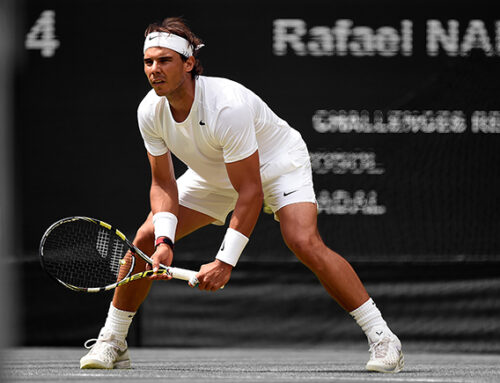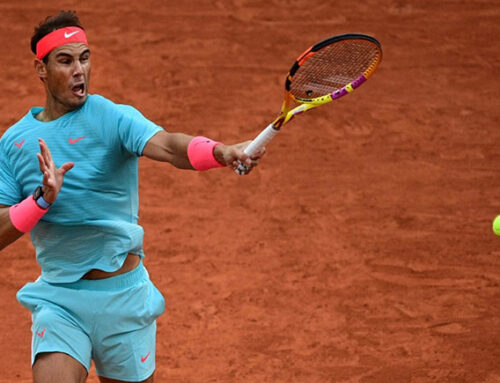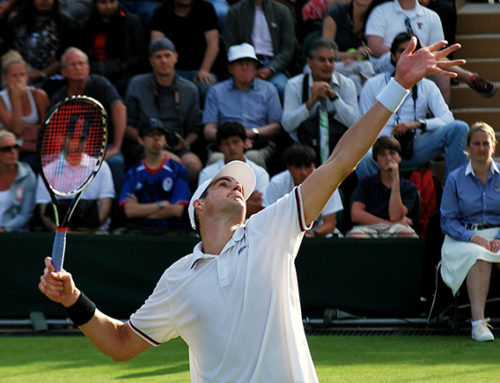When people talk about the defensive prowess of Novak Djokovic, the conversation is usually centered around his physical attributes: how fast he is, his flexibility, and his mind-blowing endurance. Certainly that’s a good place to start the conversation given he might, at his peak, have been the fittest professional tennis player in the history of the sport. There’s also always talk of his backhand, which is considered by many of the best in the game. Besides speed and technique, anticipation is another powerful tool in putting together an impenetrable defense. However even if you have all three of these things, if you’re consistently out of position then you’re constantly playing catch-up.
We’re going to examine something that Djokovic does extremely well, which is to place himself in the optimal or near-optimal place on the court to defend against the next shot. Defense is the foundation on which Novak has built his greatness, and his positioning is a cornerstone of this. What better opponent to use to highlight this than Juan Martin del Potro – possessor of one of the most potent weapons in the modern game?
The Point
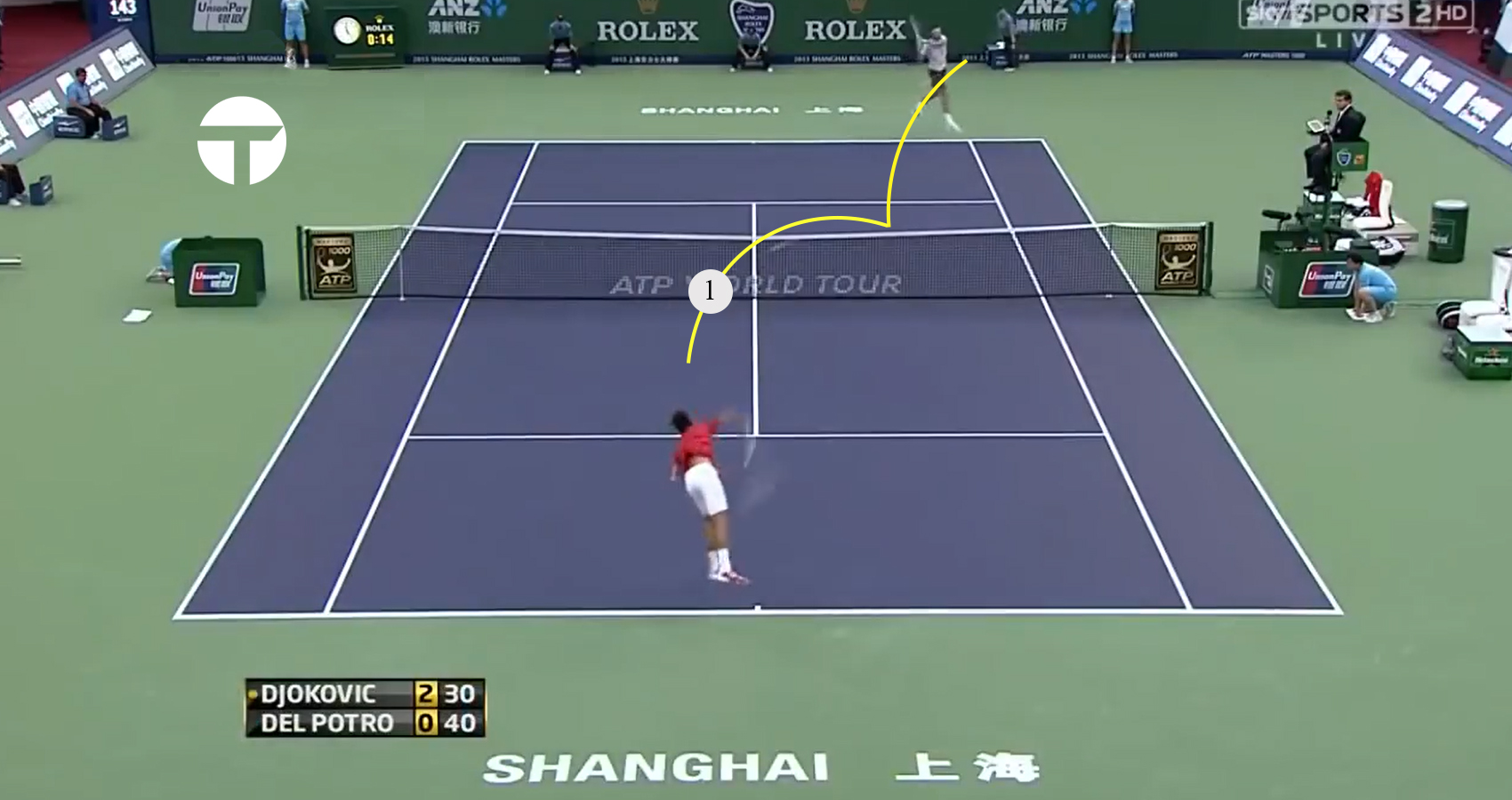
The point we’re using to illustrate this comes from their meeting in Shanghai in 2013. Djokovic opens with a second serve into the del Potro backhand – always a safer bet than sending it to Juan Martin’s forehand. There’s more to it than just avoiding del Potro’s weapon however – this serve location is likely to get the return into Djokovic’s backhand. When we think about this matchup, Novak wants to be setting up the cross-court backhand rally where possible, because that’s where he can gain the most advantage.
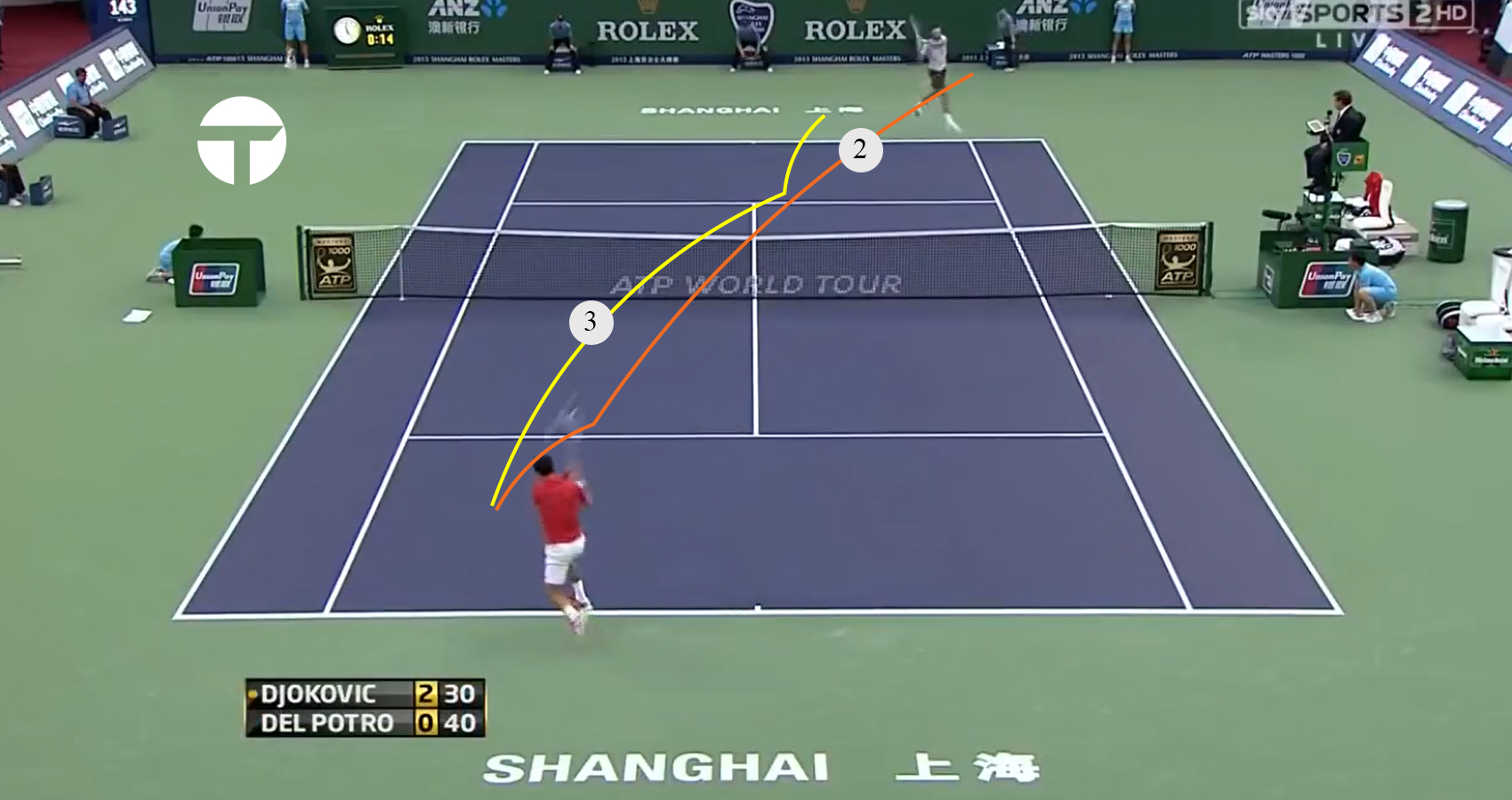
As expected, the first ball comes cross court into the Djokovic backhand. Novak’s response is an attempt to get the ball back into del Potro’s backhand, but he misses his line by a fair margin and leaves the ball towards the center of the court. For a lot of players this one central ball would be enough to lose the point. This relatively small ‘error’ would put them in a hole against del Potro that is too large to climb out from. Like a chess player who just took their opponent’s bishop, del Potro would lean on this advantage until he wins the point. Why?
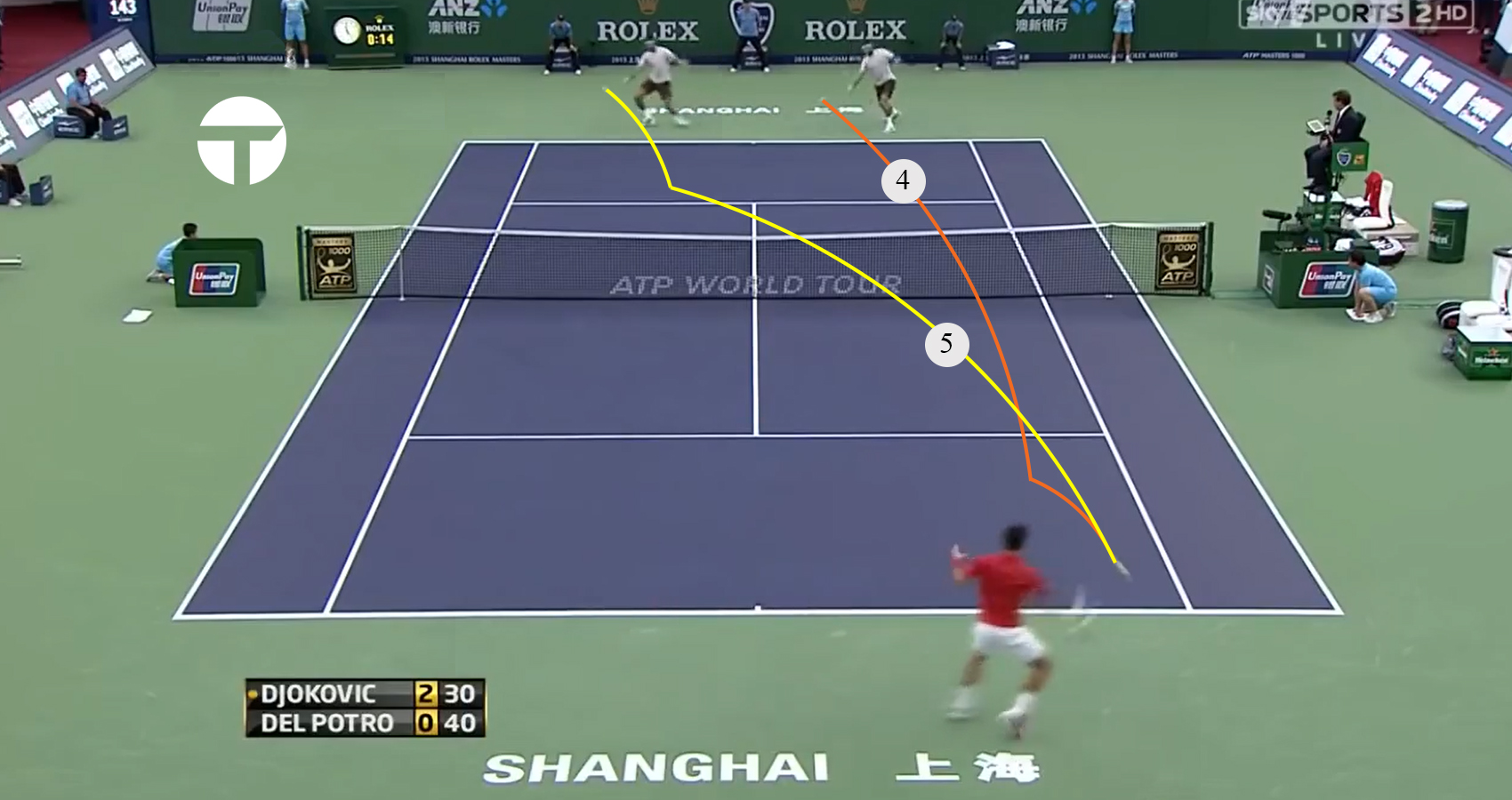
That center ball allows Juan Martin to set up his forehand. Not only that, it sets him up in a place on the court that is dangerous – he can attack Novak in both directions well. Del Potro opts to go inside-in with the forehand, attacking Djokovic’s deuce corner. Taking the forehand down the line would be a fairly high-risk play for Novak here. His margins would be lower, especially given the quality of ball coming in from the other side of the net. Instead the Serbian defends it well, and takes his own ball cross-court – keeping himself in good position. This shot selection gives del Potro an interesting choice. Juan Martin needs to stay on offence – the Argentinian is not one the game’s great defenders. If del Potro goes down the line, then he opens up his own backhand, and risks getting trapped in a backhand-backhand rally with someone who will likely beat him at it. But, breaking Djokovic down cross-court is challenging, as he handles pace well and the wider you pull him the more you open up the court for him also.
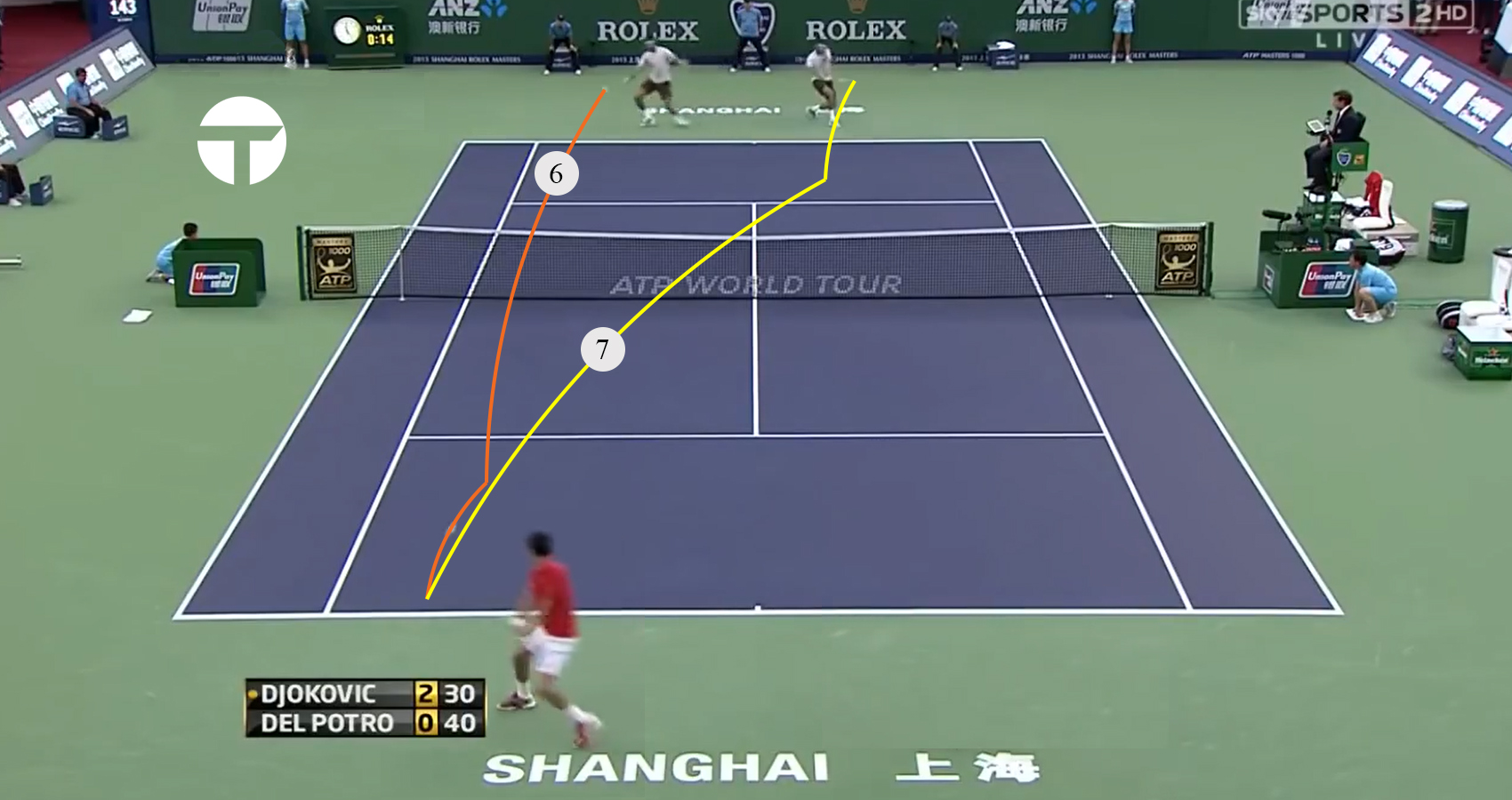
As we can see, Juan Martin opts for the down-the-line forehand. His goal here is to keep Novak off-balance and either earn the short ball or force an error. The problem for del Potro is one of positioning. Djokovic manages to get his backhand cross-court, and even though it is closer to the middle, del Potro simply isn’t quick enough to get around it. A more mobile player would be able to run around this ball and hit another forehand, but in this case Djokovic forces del Potro to hit a backhand.
Perfect Positioning
We’re going to break here for a moment and take a look at why del Potro has not been able to genuinely attack Djokovic successfully to this point in the rally. Juan Martin’s typically rally length on his opponent’s serve is between 4 and 6 shots, and any rally in which he has the opportunity to hit two aggressive forehands is usually over. And yet here we are 7 shots and two forehands in, and del Potro is about to hit the 8th shot of the rally from a fairly neutral position. So why can’t he break Djokovic down?
Defensive positioning is all about putting yourself in the best place to be able to reach all of the probable shots your opponent can hit. How does one do that exactly? You take the two widest points your opponent can realistically reach off the ball they currently have, and you stand in the middle of that space. It’s a little hard to put into words, so let’s see it in pictures!
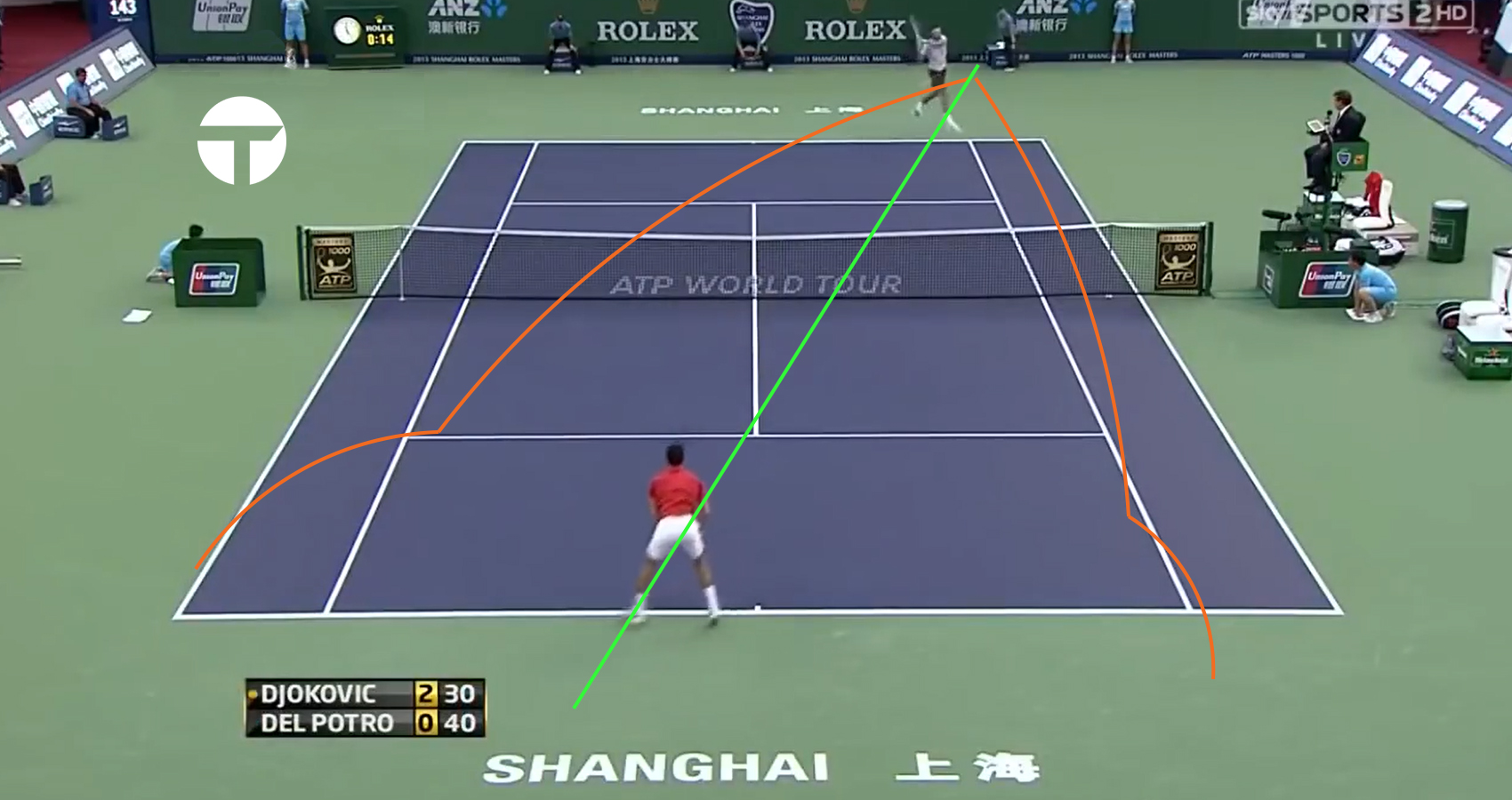
Here’s Djokovic’s position immediately following his second serve. The two orange lines represent the best shots del Potro could realistically hit off that backhand. Is it possible for del Potro to hit a sharper angle? Possible, yes. Likely, no. When we look at the likely shots, the yellow line splits that space right down the middle. You can see that Djokovic has planted himself firmly on that line.
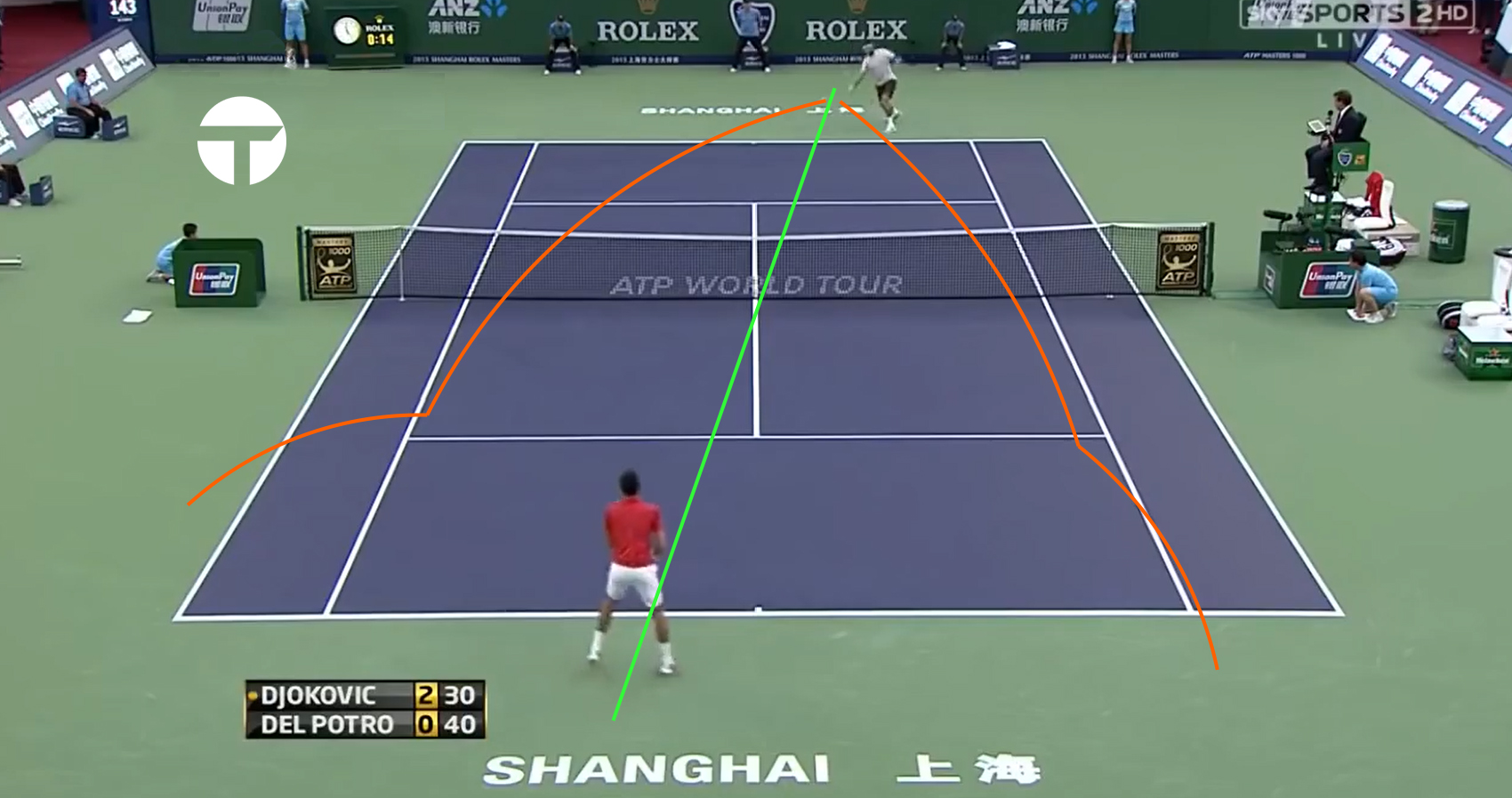
Here’s Djokovic’s defensive position at the point of contact for the next shot del Potro hit in this rally. We talked about del Potro’s ability to attack both portions of the court well with his position. Again though, Djokovic is in the perfect position to defend. Don’t be confused – Djokovic doesn’t want del Potro to be hitting a forehand from that part of the court, but Novak has positioned himself in the best place possible under the circumstances. In this scenario, many players over-respect the del Potro forehand. They understand they have given him options, and they tend to cheat to one side or the other, anticipating which side Juan Martin will attack. In other words, they guess a little bit. Novak knows his agility and foot-speed, and he trusts it.
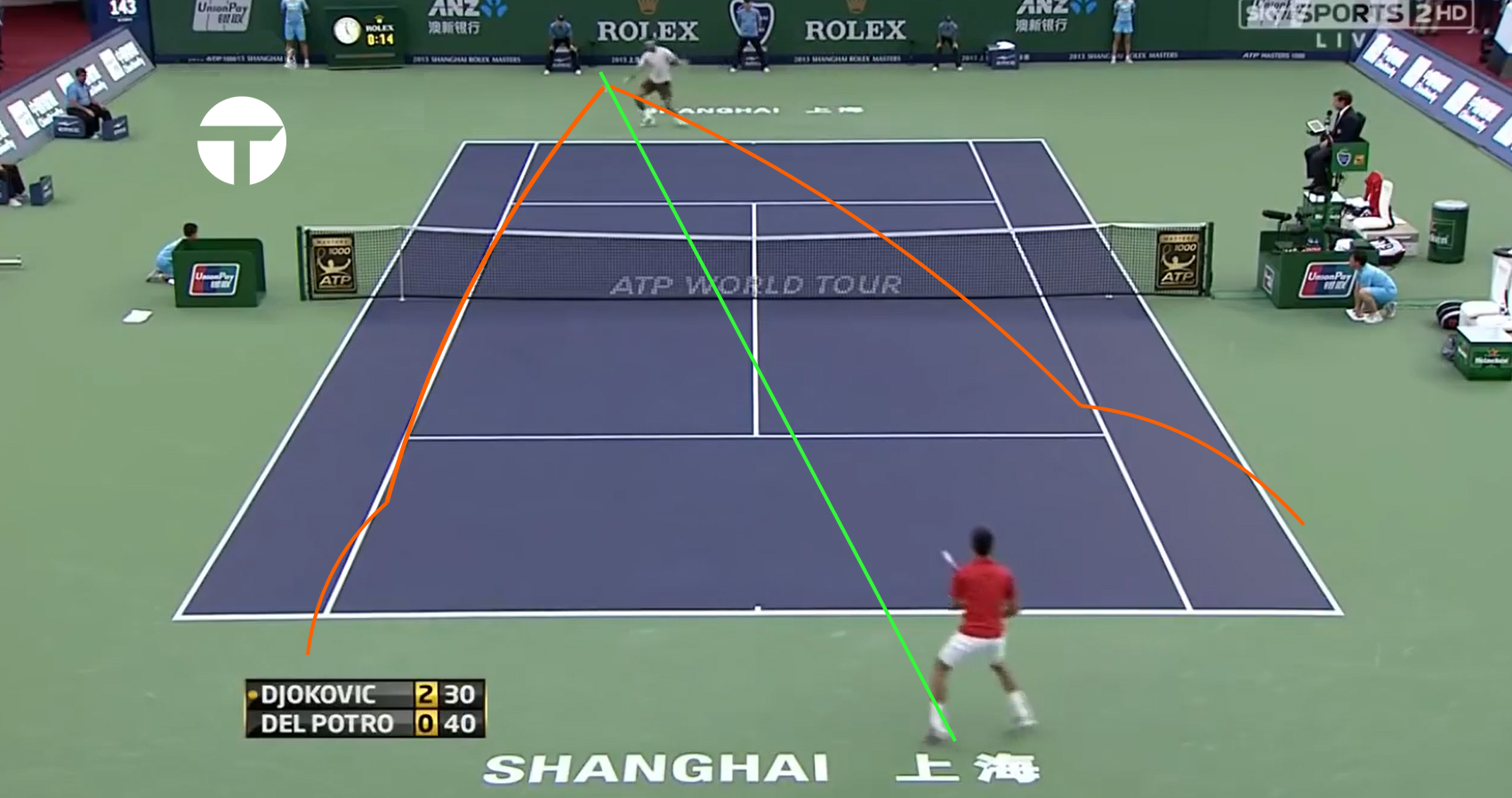
Again, we see that Djokovic sits himself right along the yellow line splitting the possible attack vectors of del Potro. For all del Potro’s weapons, Novak continues to shrink the court for his opponent. With his positioning, Djokovic is forcing del Potro to elevate his risk if he wants to hurt Novak. Djokovic is putting Juan Martin in position to make errors.
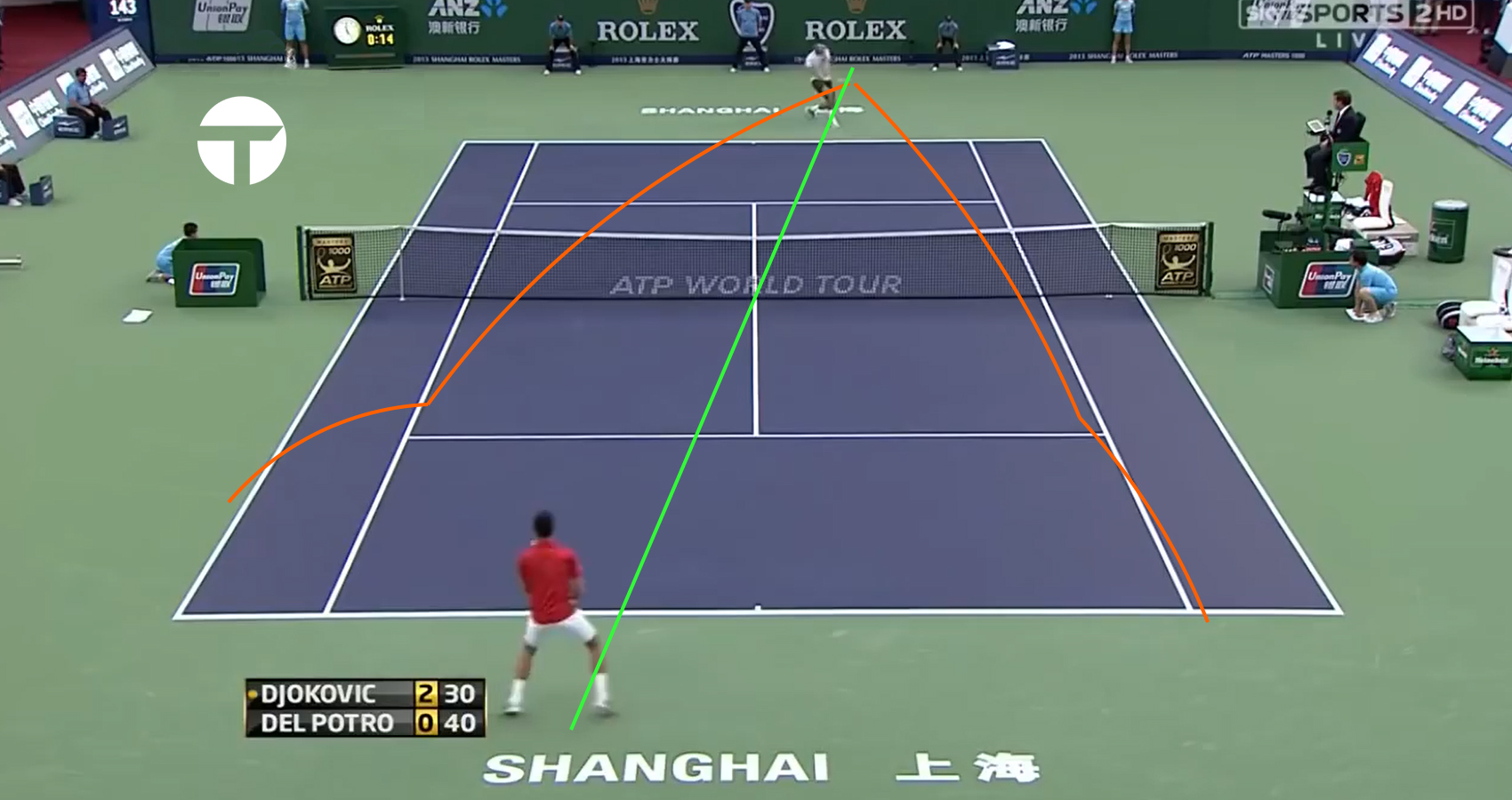
This frame brings us to where we left off. Djokovic has managed to redirect play onto the less-dangerous del Potro backhand, and again he is in perfect position. While the point has been interesting so far, this is when the action really starts. Until now, if we think about the orange lines representing the possible shots del Potro could have hit in the rally, all of the shots Juan Martin has actually hit are comfortably inside those lines. That is to say, he’s played within reasonable safety margins, not pushing the edges. Del Potro has hit some big forehands, he has tried to press Novak with some power without going too close to the lines. However because of Djokovic’s positioning he has nothing to show for it – two big forehands into the rally del Potro is hitting a backhand from a fairly neutral position, and Djokovic is standing in the perfect place. So now what?
The Chance
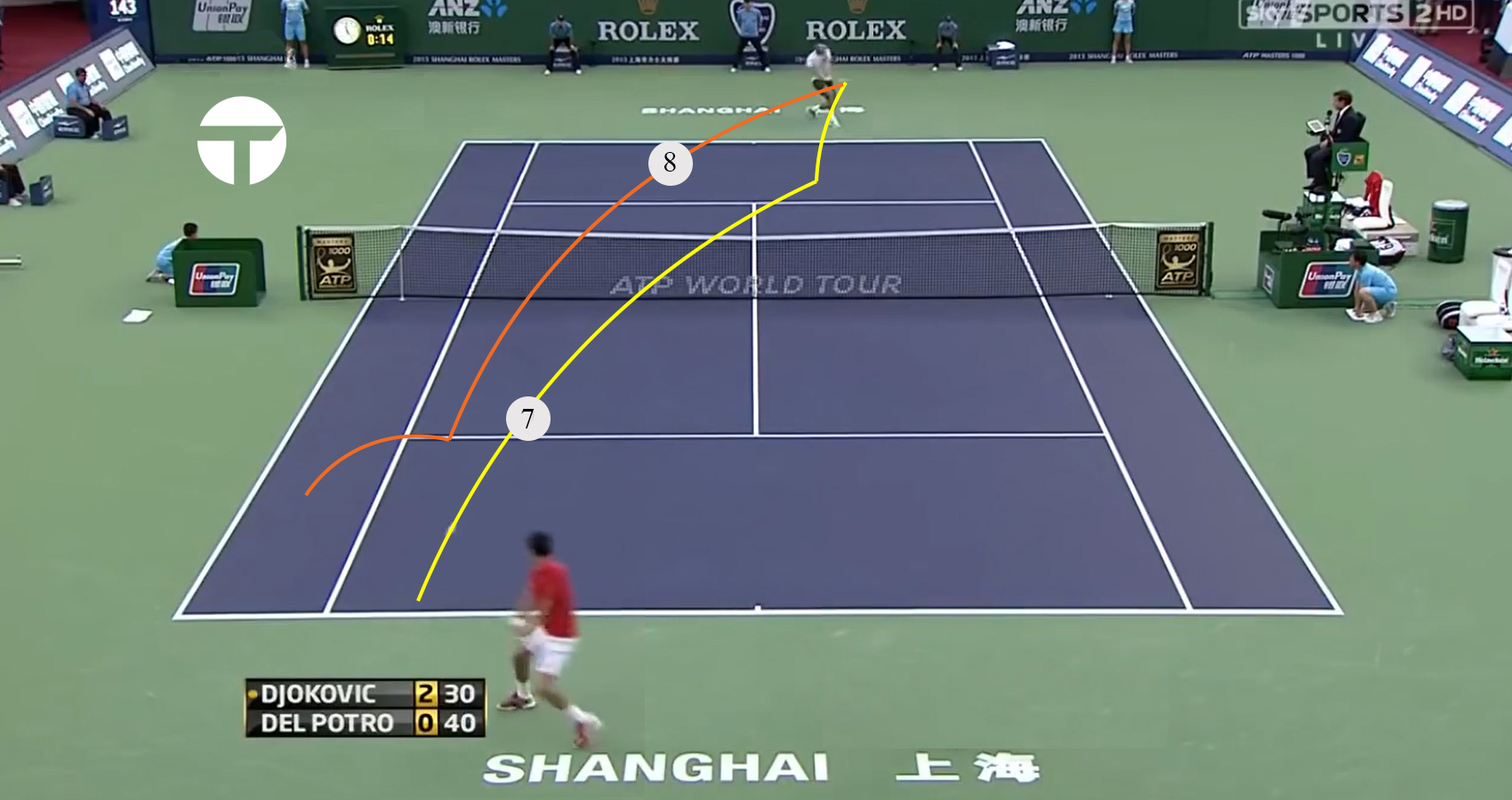
Juan Martin presses. Del Potro doesn’t just hit the ball close to the line, he brings it up high in the court with angle. Seeing this in two dimensions might not convey just how aggressive, how risky this shot was. Consider how close to the middle del Potro is standing when he hits this ball. There is no real angle for him to work with – he is creating it. Thinking back to the orange lines, del Potro has finally pushed towards the edge of that space. In doing so Juan Martin earns his one big chance in the point, and makes his one big mistake.
Until now, Djokovic has made it to the ideal recovery position in time for del Potro’s next shot. There’s two factors involved in this:
1. Knowing the right place to be. Plenty of players at all levels recover to sub-optimal positions in between shots.
2. Having enough time to get there. This is dependent on both the actual time between shots and your speed – the faster you move the less time you need.
Suddenly, del Potro has put Djokovic in a place where he doesn’t have enough time. The angled backhand from del Potro is so wide, even Novak’s fleetness of foot isn’t enough to get him back where he wants to be. When Juan Martin sets up for his next shot, he finally has Novak out of position – his first real chance to pull the trigger and end the point.
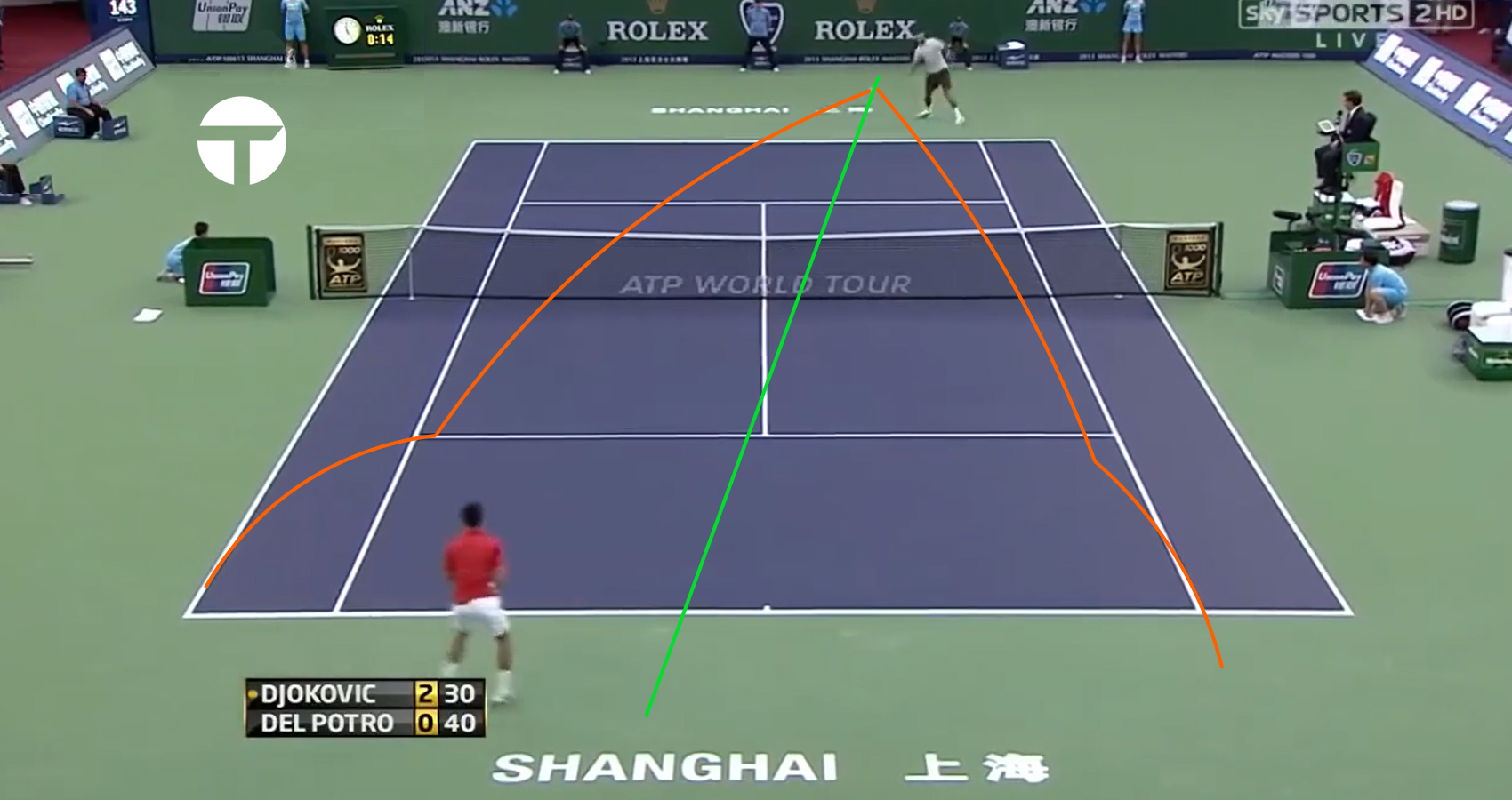
Because of Novak’s relative balance in his groundstrokes – his ability to hurt opponents off both wings – he doesn’t want to be put into this position. This is in stark contrast to a player like Alex de Minaur, who relies on leaving openings like this intentionally in order to shuffle play off his weaknesses onto his strengths. The problem is, when you’re looking at a weapon the size of del Potro’s forehand, you can’t afford to leave space like this open intentionally. That de Minaur does so is part of the reason that his one meeting with del Potro to date was a very lop-sided affair which del Potro won 6-2, 6-1.
When we look at it from this angle, the shot selection for del Potro seems simple – take the forehand inside in and either earn an even bigger advantage in the point or end it altogether. The problem for del Potro is the dilemma that all aggressive players have when facing an opponent more consistent than them, an opponent who has great defense. What is the right level of aggression? Just how risky should he get? If he presses too hard, Juan Martin makes mistakes which plays right into Djokovic’s hands. If del Potro is too passive, then Djokovic will punish him and del Potro’s defense is not his strong suit.
The Mistake
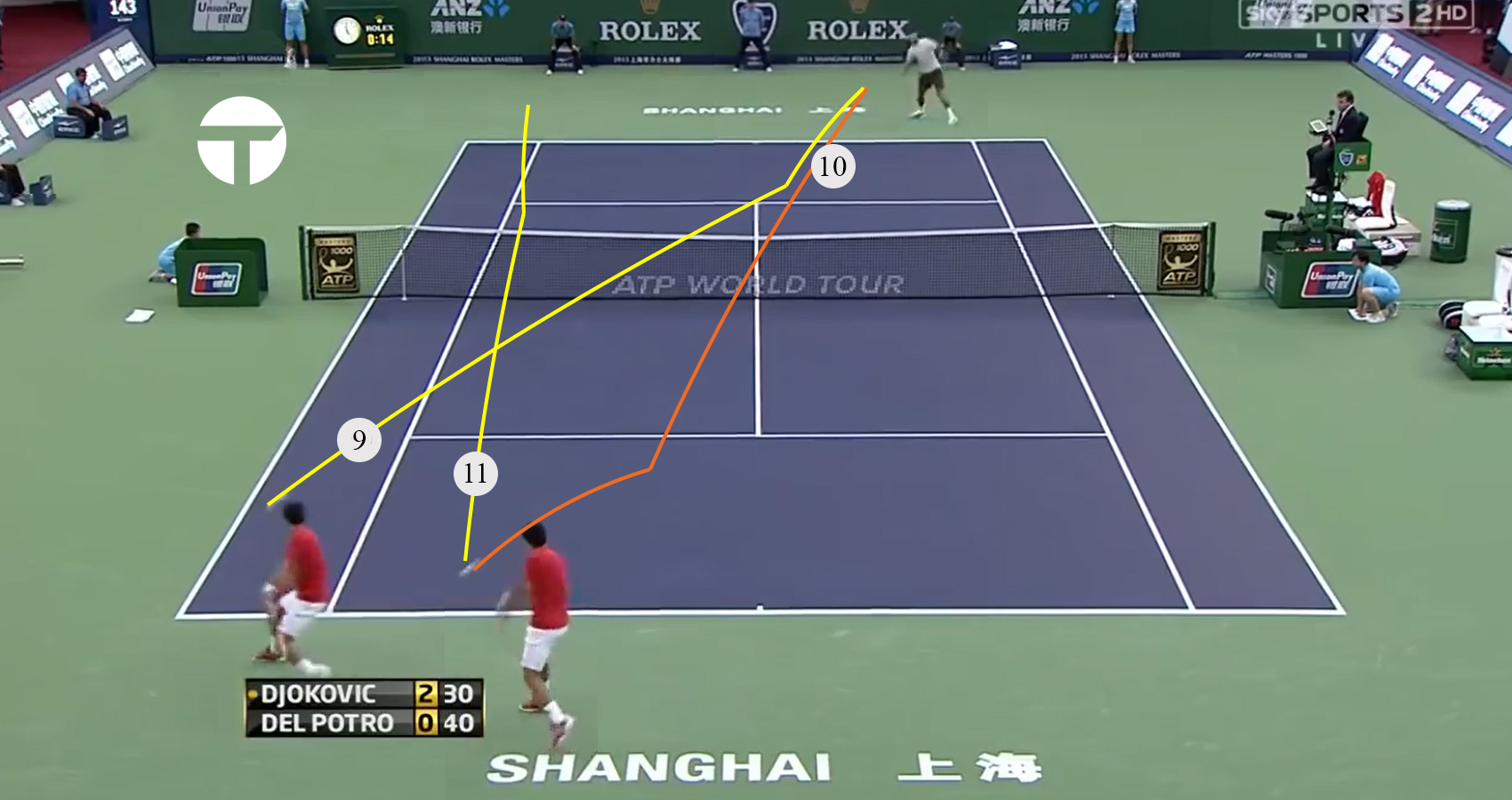
In the end, del Potro plays too passively. While it is understandable that he didn’t pull the trigger on his first forehand of the point (because of Djokovic’s excellent positioning), in this situation he almost has to pull the trigger. Instead he plays the ball back into Novak’s backhand, and just like that, the point is over. del Potro waits on another inside out forehand, and instead Djokovic slides his backhand up the line for a winner.
It’s a brilliant shot from Djokovic, but also one which del Potro allowed him to hit. Against a player like Novak you may only get one chance in a point. That’s not to say Djokovic doesn’t make errors of his own but his defense is so strong, so inpenetrable at times, that creating openings such as this can be difficult. Recognizing the opening a fraction of a second, and pulling the trigger on it can be even more difficult. Djokovic’s positioning is stifling – a player can hit good shot after good shot and have nothing to show for it. Then when the chance finally comes, they fail to act on it. The irony then is the inability to break Djokovic down means his opponents often become overly aggressive out of frustration.
Conclusion
This sequence is primarily meant to highlight what proper defensive positioning in singles looks like. Many players at all levels don’t quite recover to the correct place between shots. For some, this is intentional – such as in the case of Alex de Minaur. For most however it comes from never having been taught where to recover to and why that is the right position. When we put it in terms of splitting the space, it creates a powerful visual.
How does this translate to your matches? In part it depends on your opponent. If they play with very flat, low, hard groundstrokes then their ability to spread the court is reduced – the amount of space you need to split is smaller, which brings your recovery closer to the middle of the baseline. In part it also depends on your strategy. If your opponent doesn’t have the weapon to truly hurt you, you may wish to leave more space to one side in order to influence play onto your preferred patterns.
The other thing we can take away is just how small the margins at the top of the game are. Novak defends better than probably anyone in the history of tennis (except possibly Nadal), and yet he is no toothless tiger. del Potro played a good point, and against most players he still would have won the exchange. Novak leaves so little room to attack him in, and if you fail to take advantage he is fully capable of punishing you for it.
Does this change the way you think about defense? How does it fit into your game? Shoot us an email!

